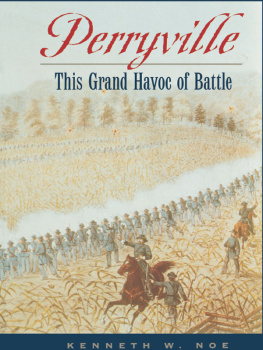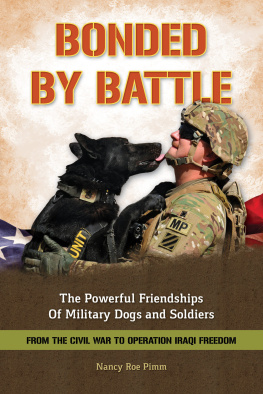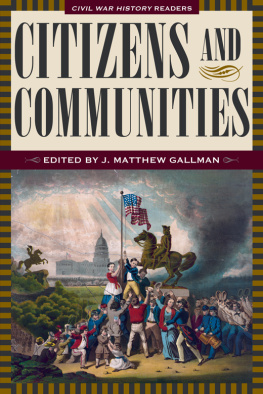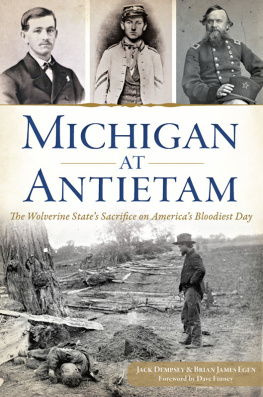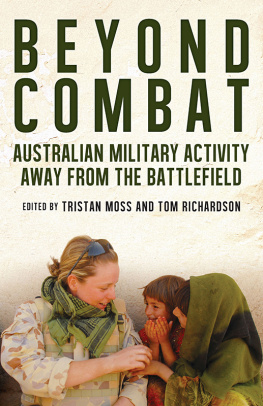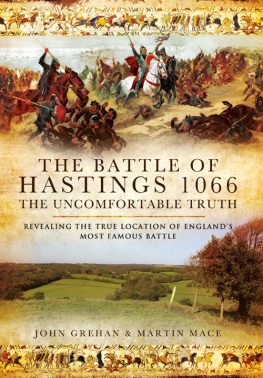Published by Louisiana State University Press
Copyright 2018 by Louisiana State University Press
All rights reserved
Manufactured in the United States of America
FIRST PRINTING
DESIGNER : Mandy McDonald Scallan
TYPEFACE : Whitman
PRINTER AND BINDER: Sheridan Books, Inc.
Cataloging-in-Publication Data are available from the Library of Congress.
ISBN 978-0-8071-6977-3 ( cloth: alk. paper ) ISBN 978-0-8071-7029-8 (pdf) ISBN 978-0-8071-7030-4 (epub)
The paper in this book meets the guidelines for permanence and durability of the Committee on Production Guidelines for Book Longevity of the Council on Library Resources.

FOREWORD
The Civil War was preeminently a military event. It played out on a vast strategic landscape, involved millions of men in uniform and many more millions of civilians behind the lines, shaped nonmilitary elements of society in the United States and the Confederacy, and created memory traditions that resonate after more than 150 years. No one better understood the centrality of arms than Abraham Lincoln. On March 4, 1865, he delivered his Second Inaugural Address to listeners who had gathered at the Capitol after drenching rains earlier in the day. Both the president and his audience understood that victory over the Confederacy almost certainly lay just ahead. Six hundred thousand Union soldiers had died or suffered wounds during the war, and Lincoln left no doubt about the role those men had played. The progress of our arms, upon which all else chiefly depends, he remarked, is as well known to the public as to myself, and it is, I trust, reasonably satisfactory and encouraging to all. The audience fully grasped that the presidents all else included the conflicts two surpassing outcomesrestoration of the Union and emancipation.
Walt Whitman similarly described the reach of military events. He termed the war that many-threaded drama with its sudden and strange surprises, its confounding of prophesies, its moments of despair, the dread of foreign interference, the interminable campaigns, the bloody battles, the mighty and cumbrous and green armies, the drafts and bounties... with, over the whole land the last three years of the struggle, an unending, universal mourning-wail of women, parents, orphans. Whitmans passage catalogs conventional military operations, expansion of governmental power to keep ranks filled, ties between the home and battle fronts, and scale of loss as parts of the sprawling whole that brought creation of a system of national cemeteries, establishment of Memorial Day (originally Decoration Day), and, eventually, massive outlays for veterans and their families.
The war highlighted continuities with previous and subsequent American history. For example, the concept of the citizen-soldier, imbedded in the nations culture from the eighteenth century onward, lay at the heart of efforts to build great armies in the United States and the Confederacy. Union occupation of Southern cities and territory raised issues that had flared during Britains military presence in the colonies after the Seven Years War (175663), arose again during U.S. control of Monterrey and Mexico City during the Mexican-American War (184648), and would provoke bitter debate and violence during Reconstruction. Guerrilla activity on the margins reached levels of intensity and depravity reminiscent of action in the Revolutions southern theater in 177881 and, to a lesser degree, in parts of Mexico during Zachary Taylors and Winfield Scotts operations. Conflicts with Indians in Minnesota, Arizona and New Mexico, and Colorado mirrored episodes extending from feed fights of the colonial era through the Second Seminole War (183542) to Wounded Knee (1890), and the Navajos Long Walk recalled the removal of the Five Civilized Tribes from the Old Southwest to what is now Oklahoma. As in all American wars, federal military policy, failed campaigns, and escalating casualties fueled debates about the proper role of dissent in a free society. Perhaps most obviously, the Civil War produced commanders who took their place among earlier celebrated figureson the winning side,
Ulysses S. Grant, William Tecumseh Sherman, and Philip H. Sheridan joined George Washington and Nathanael Greene, Andrew Jackson and Jacob Brown, and Taylor and Scott. Somewhat incongruously, Robert E. Lee and Thomas J. Stonewall Jackson, whose labors might have scuttled the republic, eventually achieved iconic status throughout much of the restored nation.
Much of the continuing fascination with the Civil War stems from the ways in which it departed from earlier examples and patterns. The scale dwarfed all other American wars. A hackneyed yet still effective way to make this point is to compare casualties during the Gettysburg Campaign, which approached 60,000 Americans between mid-June and mid-July 1863, and the smaller number of battlefield losses during the Revolutionary War, the War of 1812, and the war with Mexico combined. In terms of direct effect on the largest percentage of the population, even the two world wars of the twentieth century far fall short. Military operations, as well as the intrusive presence of armies during winter encampments, wreaked havoc on economic infrastructure, agricultural patterns, and both the built and natural environments. Moreover, though British armies and naval forces temporarily disrupted slaveholding social structures during the Revolution and the War of 1812, Union military success ensured destruction of the entire institution of slavery. The voracious military demands of the Civil War also brought unprecedented expansion of federal authority, including national conscription and income taxes in both the United States and the Confederacy.
The essays in Upon the Fields of Battle underscore the importance and complexity of the Civil Wars military history. They reflect a field that has undergone a sea change over the past twenty years, yielding a body of work that engages old questions and topics from new perspectives, opens fresh avenues of scholarly investigation, and, somewhat akin to Emersons oversoul, seems capable of almost infinite expansion. The contributors, whose interests and specialties fall along a wide spectrum, collectively afford readers a sense of the war as Whitmans many-threaded drama.
Gary W. Gallagher
Charlottesville, Virginia


